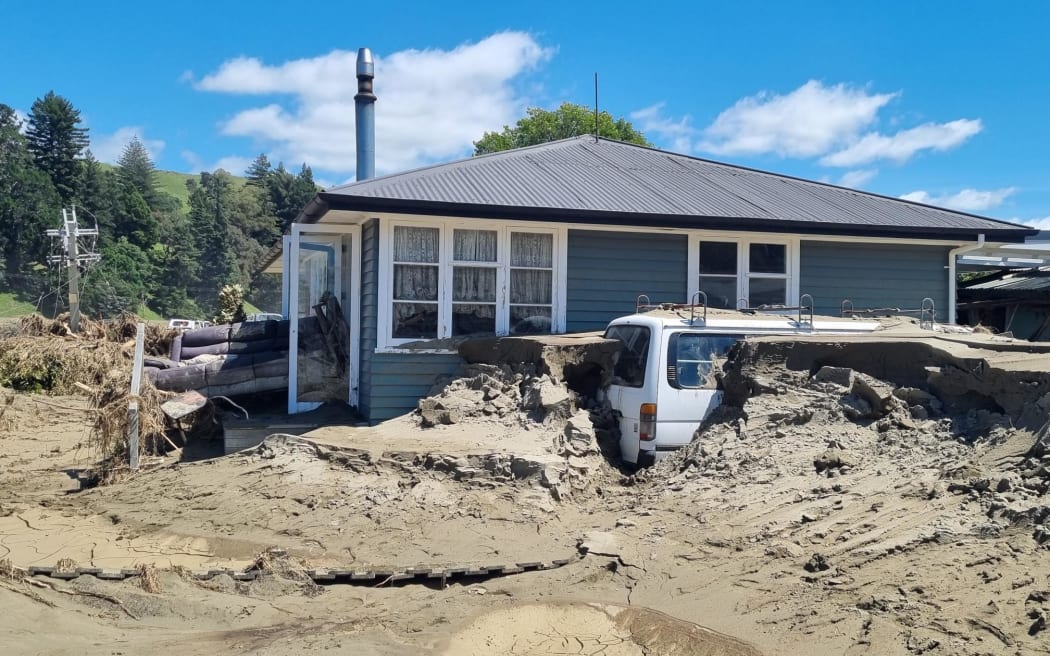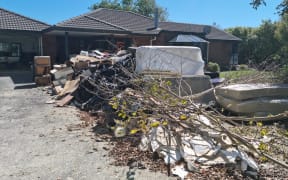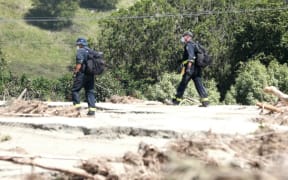
Cyclone Gabrielle led to catastrophic flooding in the Esk Valley, where floodwaters and silt washed through houses and buried vehicles. Photo: RNZ / Tess Brunton
A long-awaited report scrutinising Hawke's Bay Civil Defence's response to Cyclone Gabrielle will be made public today.
The findings and recommendations from an independent review headed up by former police commissioner Mike Bush are due to be released on Monday afternoon.
The review was commissioned almost a year ago by the Hawke's Bay Civil Defence Emergency Management Joint Committee - made up of the region's four mayors, the regional council chief executive, and mana whenua representatives.
It investigated how well prepared officials were prior to the cyclone, as well as the agency's immediate emergency response.
Hawke's Bay suffered the biggest loss of lives in the cyclone. Rivers burst their banks and sodden land gave way, sweeping eight people to their deaths.
Homes and infrastructure were destroyed, communications and power were cut, livelihoods were lost, and some rural communities were isolated for weeks.
When the review was announced, regional council and joint committee chair Hinewai Ormsby said it was vital the councils identified any lessons that could be learnt
"The impacts of Cyclone Gabrielle on our region have been devastating and far reaching, first and foremost on our people, particularly those whānau who have lost loved ones," she said.
"It is important we move with pace on this review, to ensure our communities are prepared for any event in the future."
Some mayors later expressed frustration that the review process was taking so long.
In early January, Mike Bush said the review had attracted more than 1000 community submissions.
Anger over cyclone response
The Civil Defence response came under fire from locals soon after the cyclone.
Some were furious they had not received evacuation alerts, or received them too late - and pinned deaths on that failure.
And a community leader from the coastal town of Waimārama, Richard Gaddum, said Civil Defence was set up to fail.
In June he told a joint committee meeting the wheels started falling off in 2014 when about a dozen community-based Civil Defence groups were disestablished, and the remit was moved to more centralised management under Hawke's Bay Regional Council.
Cyclone Gabrielle proved the consequences of those changes, he argued.
"To expect a skeleton crew from Civil Defence personnel to cope with such a catastrophic event over the whole of Hawke's Bay region was an impossible task, and proved to be so."
The public deserved better, he said.
Major changes under way for Civil Defence when Cyclone Gabrielle hit
Soon after the independent review was announced, RNZ revealed Hawke's Bay Civil Defence had been in the throes of a major overhaul when Cyclone Gabrielle hit.
Well before the cyclone, another independent review found it lacked experienced and well-trained staff, vital information was not being shared between Civil Defence and emergency services due to IT system constraints, and the organisational structure needed a rethink.
The 2021 review, carried out by ContextusSolutions, was commissioned in the wake of the 2020 Napier floods and the impact of Covid-19 pandemic.
The emergency response structure, staffing and systems were identified as needing to be "addressed with urgency", it said.
In April, Civil Defence said work on implementing that review's 17 recommendations was mostly on track.
But it said staff vacancies, Covid-19 sickness, the pandemic response, lack of funding and the national emergency management reforms were all identified as risks that could hinder progress.
It was likely the Mike Bush review would take into account that Civil Defence was going through big changes when the cyclone hit, it said.








